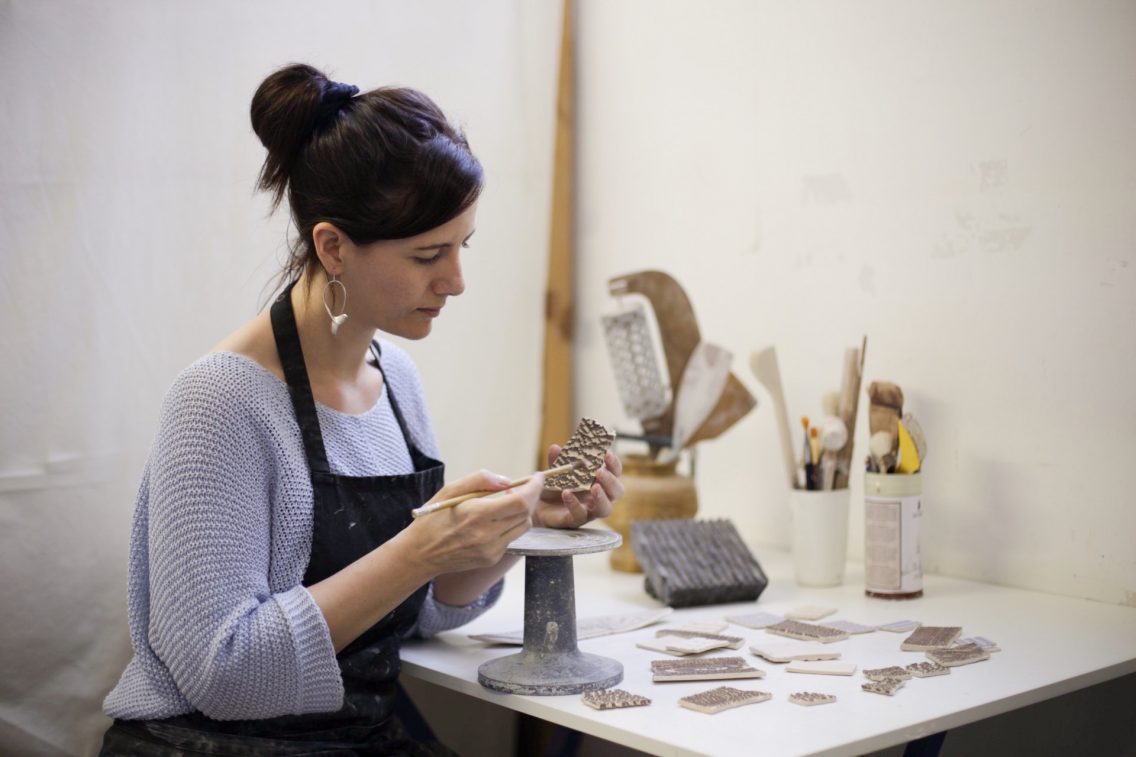
El Torn. Ávila 24, 2-1. 08018 Barcelona. T (+34) 673 114 734. www.corriebainceramics.com
La cerámica siempre había sido mi asignatura pendiente, pero añadir más cosas a mi rutina parecía prácticamente imposible. Y así pasaron los años, recordando con nostalgia las tardes en el taller compartido de cerámica que tenía mi madre en Poble Nou. Yo era una niña de unos 10 años y no muy consciente, pero sí pude ir valorando esas obras utilitarias durante los siguientes 30 años, observándolas sin juzgar, pero sobretodo, lo que me llegaba dentro era el cariño que desperendía cada objeto fruto de una producción hecha con muchísimo amor.
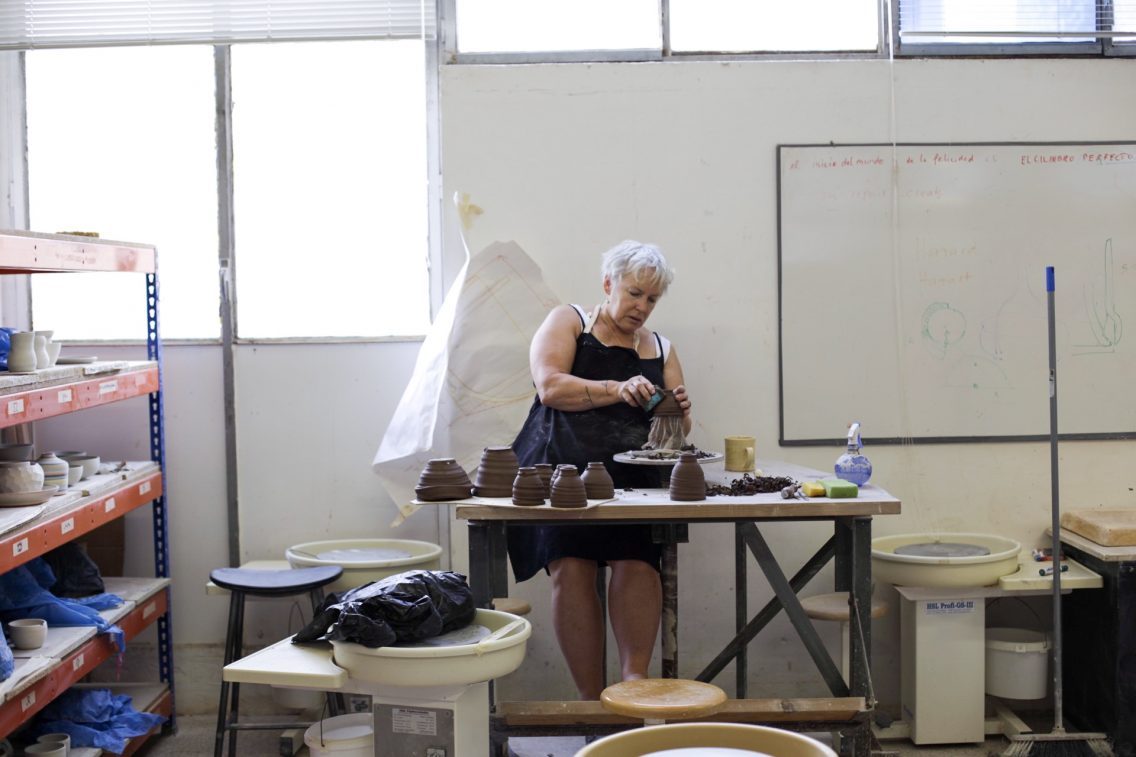
Finalmente, me deshice de los muros que yo misma construí a mi alrededor, y gracias a Nona Bruna, fui a visitar este taller industrial sito en la segunda planta de una nave en Poble Nou. El lugar me fascinó nada más entrar, y me enamoré de su luz, de las obras de arte y sobretodo del ambiente internacional, lleno de creatividad pero a la vez desprendiendo muchísima calma. El Torn me dió paz y en seguida comprendí que debía iniciar mi ansiada andadura por el mundo de la cerámica. La primera cuestión que tuve que resolver fue ¿moldeado o torno?. Me costó decidirme, pero finalmente me decanté por hacer un curso intensivo de una semana de torno y así averigüar si era lo mío. Ambas opciones son muy creativas, pero requieren de muchísima técnica. En cualquier caso, es un proceso meditativo y contemplativo que me trae paz interior.
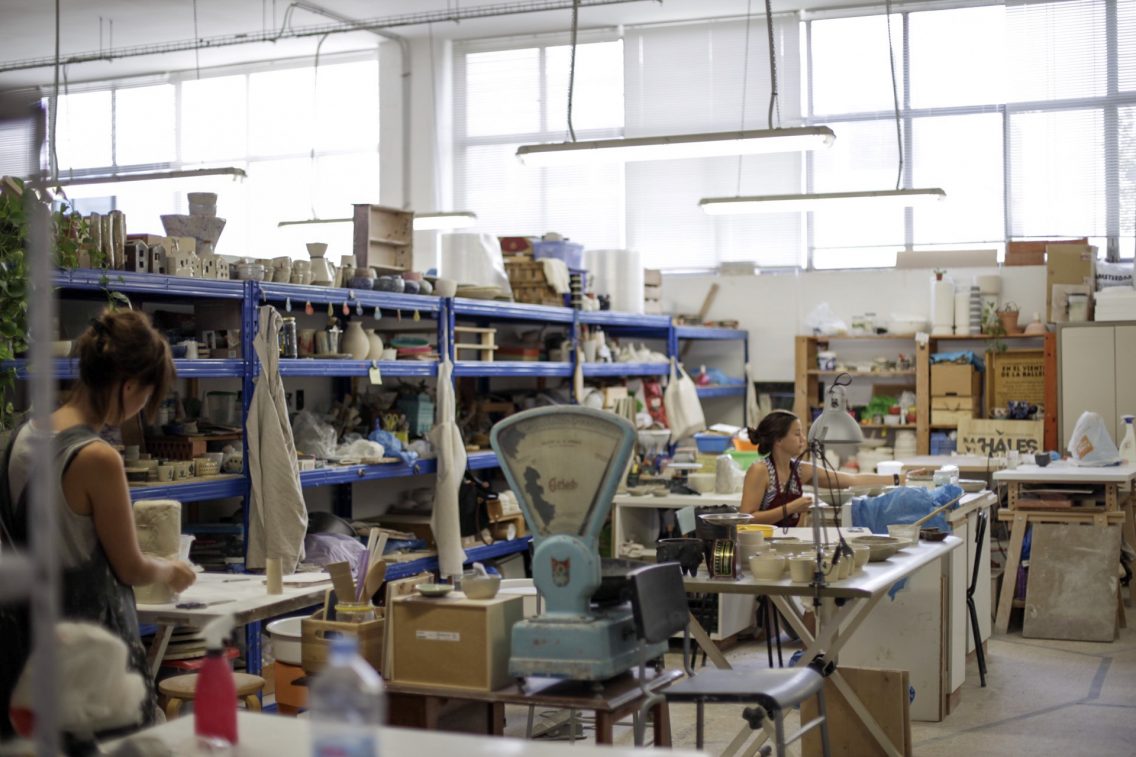
Me gustó tanto la experiencia que en parte fue gracias a mi profesora la ceramista Corrie y a las 5 otras compañeras, que voy a hacer un hueco en mi agenda a partir de septiembre y encontrar dos horas semanales para dedicarlas a hacer cerámica. A crear objetos utilitarios que harán que mi comida sepa diferente. A dedicarle horas a hacer un bol (tornear, retornear, esmaltar, hornear…) y así poder valorar cada uno de los objetos que se crean con dedicación, cariño y amor. No me puede hacer más ilusión. Ah, y en unas semanas iré a recoger mis 12 piezas que hice durante el curso. Hay voluntarios de El Torn que las esmaltarán para nuestra sopresa y hornearán. Estoy ansiosa por ver el resultado…
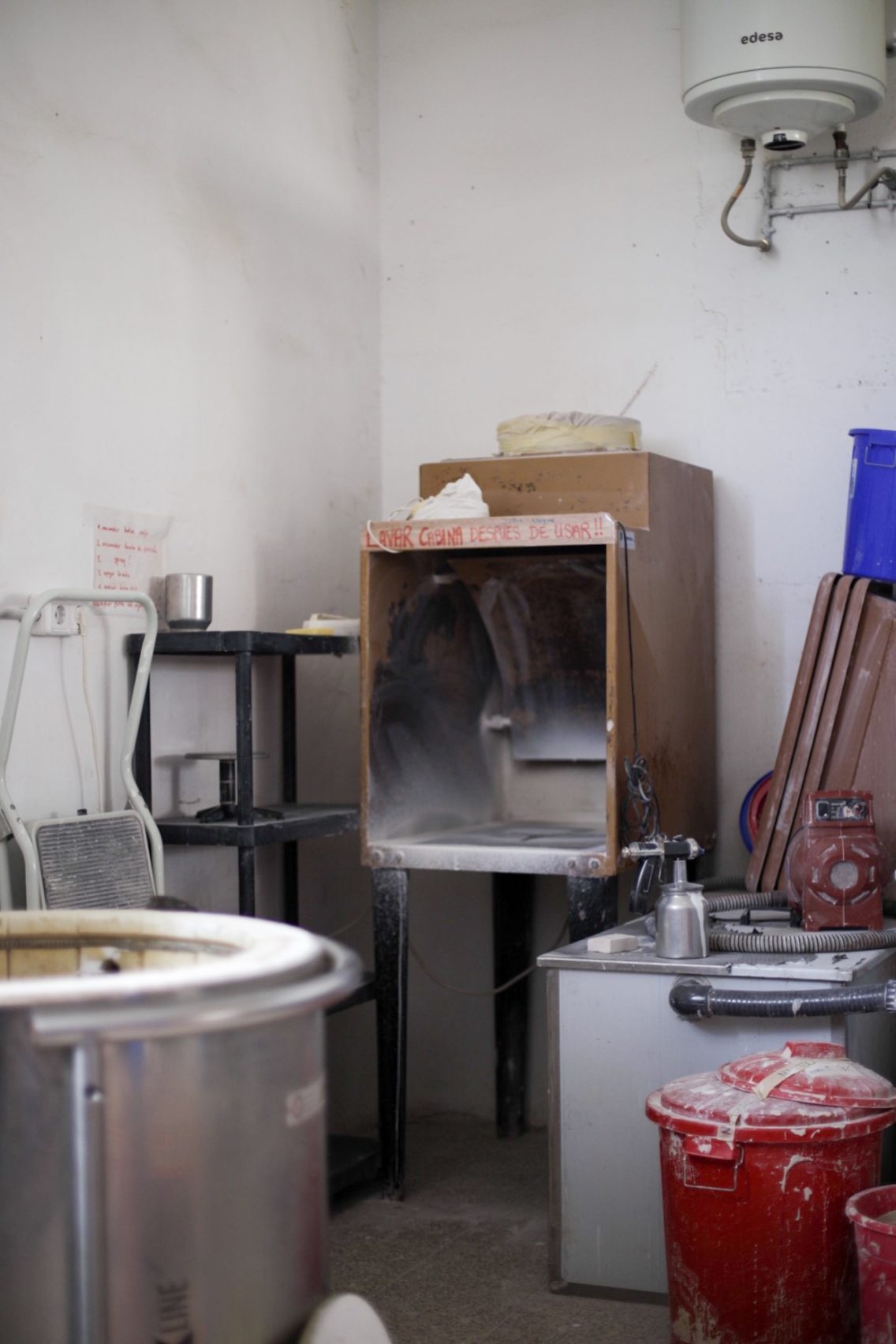

In the Mood for Food le hace unas preguntas a Corrie Bain que responderá en su lengua nativa.
1. WHAT MOTIVATED YOU TO BECOME A CERAMIST?
The idea that you can take something as simple and humble as the earth, mix it with three other natural elements such as air, water and fire, and form it into something meaningful, beautiful or useful. I was born in a remote part of Northern Scotland, and grew up in a small village on an island in Greece, always in very close contact with nature. Being surrounded by artists and creative people as a child and having a ceramist as a father meant I was in contact with clay for as long as I can remember.
All of this influenced me to begin drawing classes in Greece at the age of 12, which eventually led me to art school. After 5 years of studying different subjects such as painting, sculpture, art history, humanities, photography, and experimenting with as many materials as I could, I found that I wanted to make 3-dimensional, sculptural pieces that express ideas. Clay was the most versatile, plastic and creative medium I had worked with and ceramics became all about communicating concepts.
2. WHERE DID YOU STUDY CERAMICS?
I studied an HNC in Art and Design in Glasgow from 1997-1999, then a BA in Design and Applied Arts (specialising in Ceramics) at Edinburgh College of Art-Edinburgh University from 1999, graduating with an Honours Degree in 2003. I also studied ceramics and glaze calculation theory at Alfred University of Ceramics in New York. After that I lived in South Korea for two years to research and study oriental ceramics with Korean master ceramists, which continued in North Korea, China, Japan and Thailand. In 2013 I began training with English ceramist Seth Cardew in Masia Albadas, Spain. For the past 7 years I have been working with Martin and Paula Loew as a freelance throwing and hand building teacher at El Torn School of ceramics in Barcelona.
3. TELL ME ABOUT YOUR STAY IN JAPAN, CHINA AND KOREA, WHAT DID YOU LEARN AND WHAT IS THEIR UNDERSTANDING OF CERAMICS?
When I was about sixteen I came across a book called Orientalism by Edward W. Said. This led to an interest in Zen Buddhism, Taoism, oriental ceramics, and in turn, a desire to travel and live in the East. Oriental philosophy and way of life has been a constant source of inspiration. The ceramic artists I met there taught me the art of imperfection, to not be too precious about each piece, and I learnt to throw away pieces that didn’t “feel right” when you held them in your hands. Later on, in Japan, ceramist Tomoo Hamada once told me that his grandfather Shoji Hamada used to tell him that if a hand-made piece was too perfect and too light, then it lacked soul. Of his own work, very different to his grandfather’s, he said he aimed to combine being a free spirit with impeccable technique and knowledge of material. In China I was enthralled by the immensity of the collection of terracotta warriors in Xian, and in Jingdezhen learned many things about porcelain and the making of production ceramics. Finding my own voice as a ceramic artist will probably be the most difficult journey of my lifetime, but it is one that is constantly exciting, challenging, and rewarding.
4. WHAT IS YOUR FAVORITE FUNCTIONAL PIECE?
My favourite functional piece is a little brown teapot made by Korean friend and ceramist Lee In Chin. It is not beautiful in a conventional way, some people may even think it unattractive, but to me it is the most wonderful teapot I have ever seen. It was a parting gift he made to me when I was leaving the village in Korea. It is made with dark brown clay and is fired in a wood kiln, there are some lovely orange flashings on one side, which he said were created by the flames. He told me “You must use it!”.
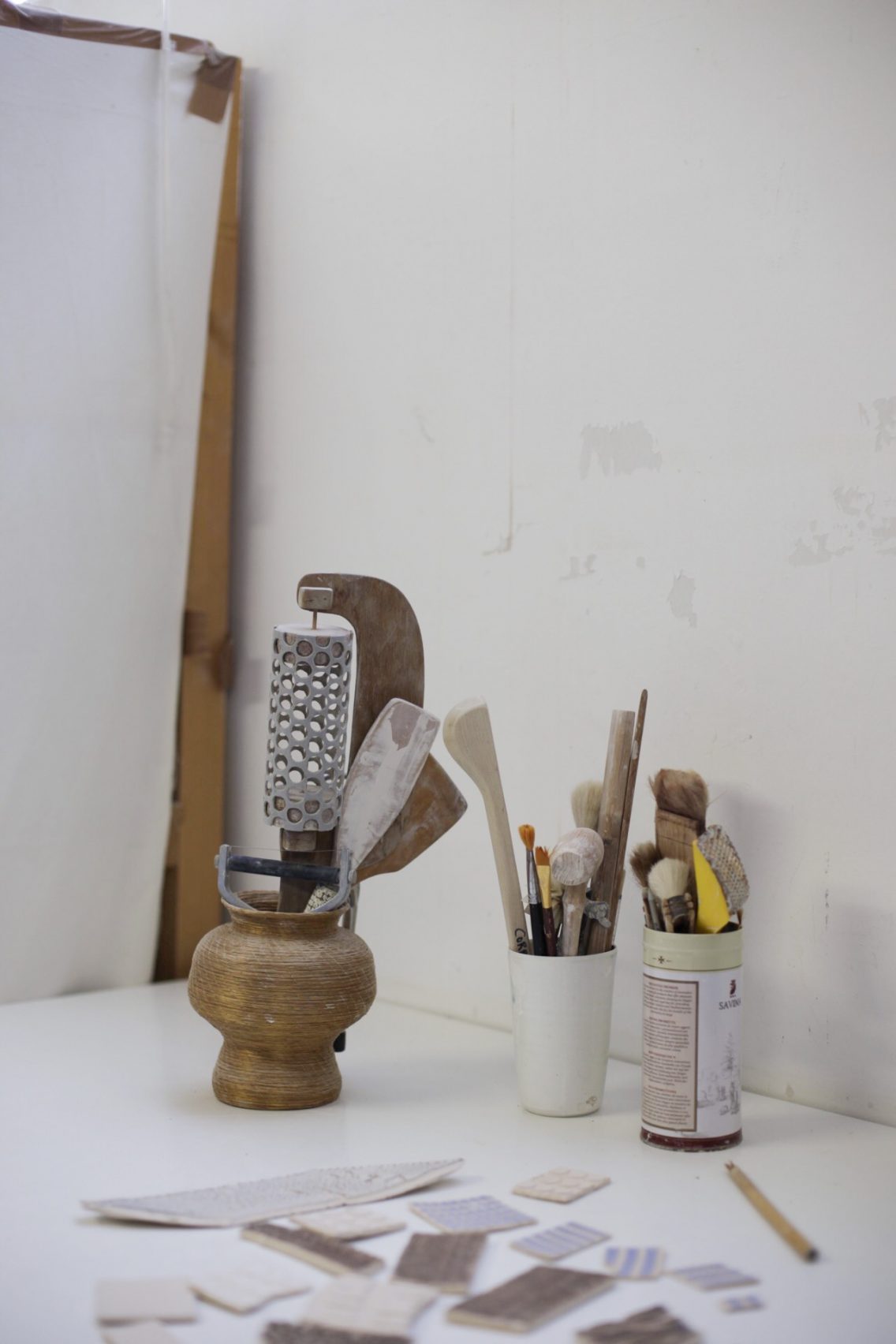
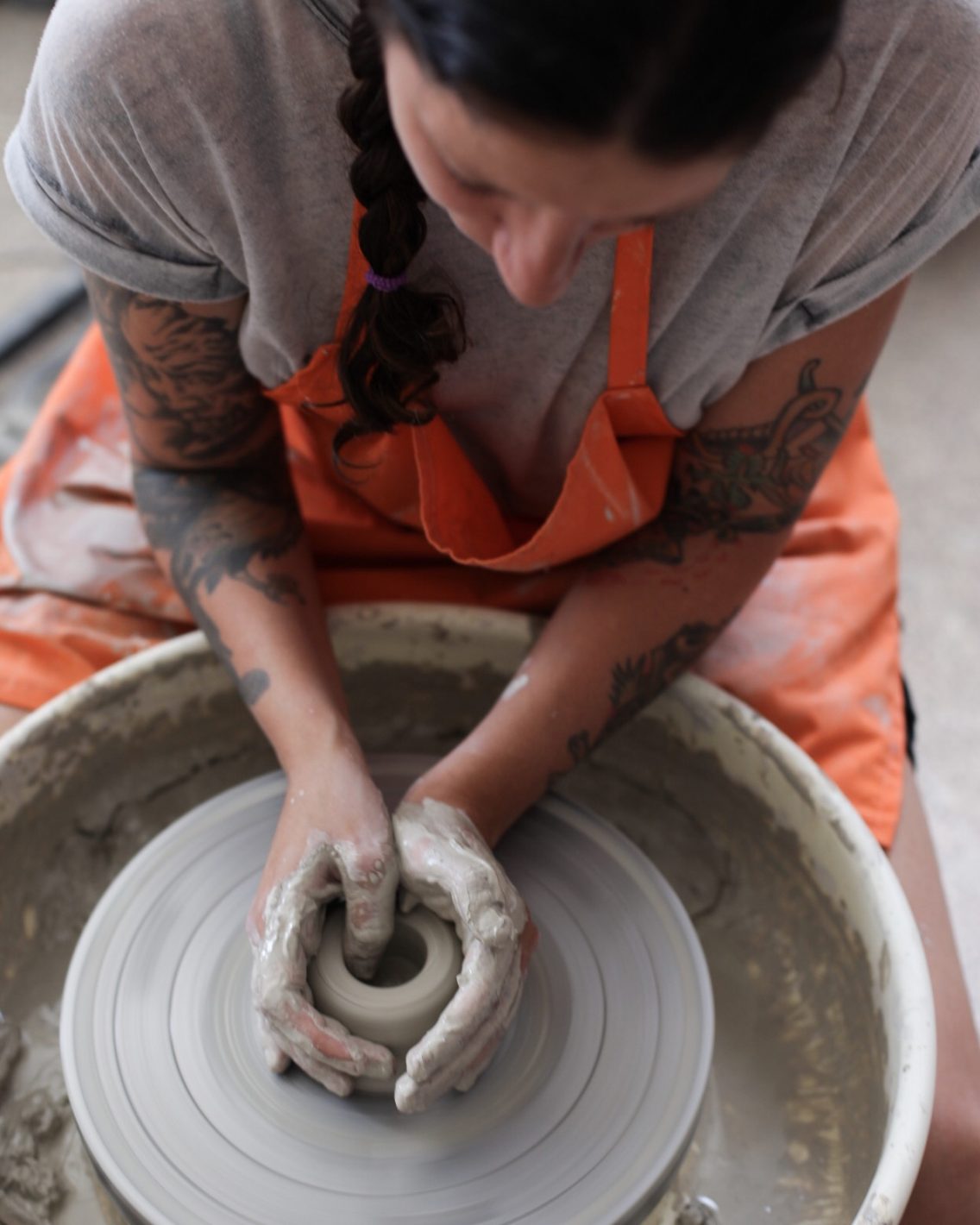
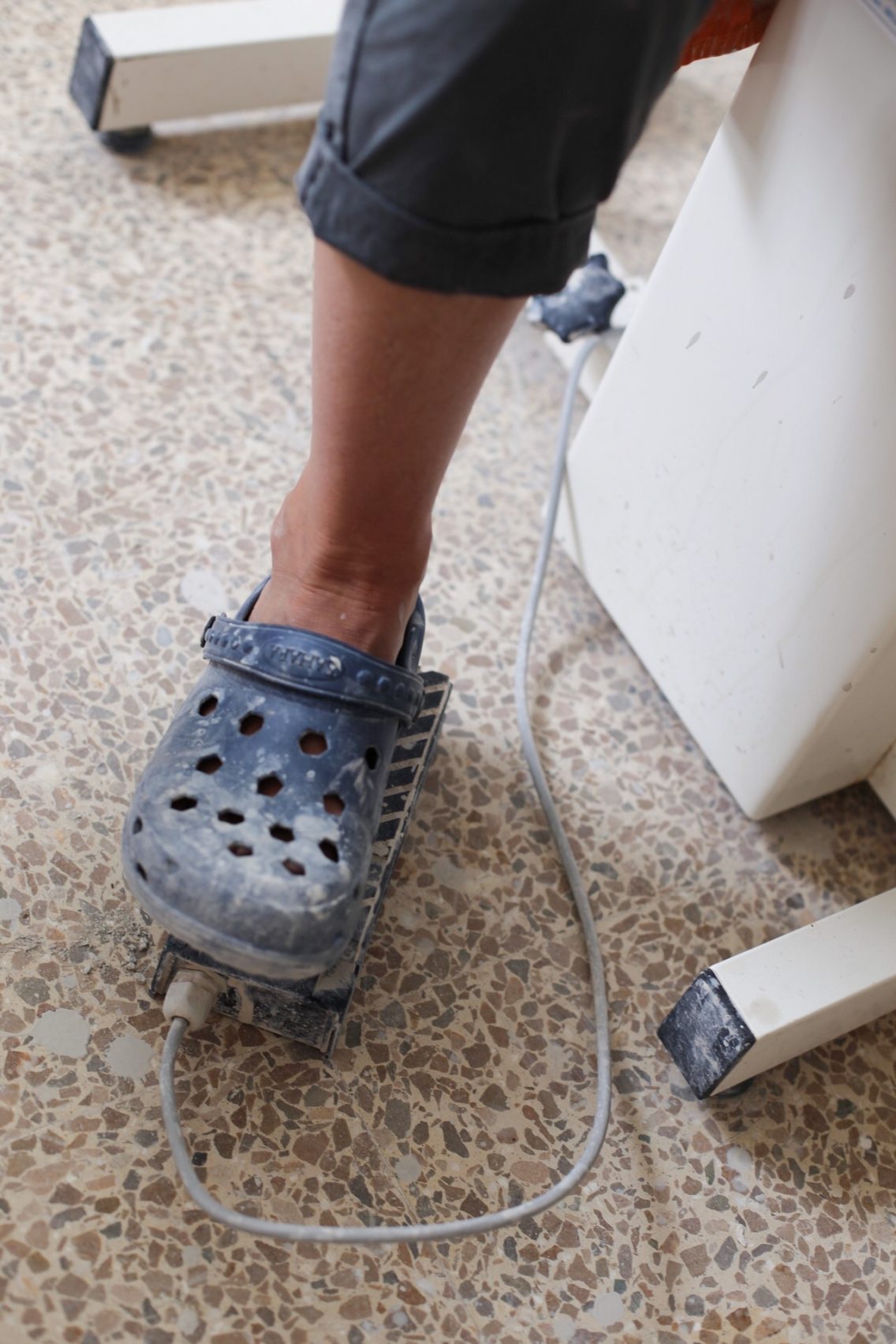
5. WHAT PIECE ARE YOU MOST PROUD OF MAKING?
The piece I am most proud of making was made during my studies at Alfred University in New York. It was a large hanging installation of 3×6 metres, made of many pieces that looked like sections of bamboo. It was hung with wire from the roof in the middle of the exhibition room and you could either walk around it or through it like a forest. Each tube-like piece was sand-blasted through two different coloured layers of clay to create holes and a weathered looking surface. It was inspired by the effects of time, weather, and erosion on matter.
6. DESCRIBE YOUR IDEAL FOOD AND WHAT CERAMICS PIECE WOULD IT BE SERVED ON?
When I was a student in Edinburgh a friend of mine called Emily Reid taught me how to make sushi, and I love to serve it on a plate made by family friend and ceramist David Whitehead from South Africa. Whenever I use his plates I recall the time he helped my parents drive a van over the snow-capped Italian Alps when we emigrated from Scotland to Greece when I was 8 years old. It was a hair-raising but unforgettable journey! David has been living in the potter’s village of La Bourne in France since then. He recently sent the plates as a gift via a friend who brought them to me in Barcelona. The plates are made in stoneware clay and were fired in a wood kiln. You can see the marks left on the inside of the plate where he has fired it upside down on top of sea shells. The calcium released from the shells during the firing forms a beautiful pattern of white lines on the surface of the inside of the plate. The natural tones and colours of the plate seem to compliment the colours of sushi perfectly.
7. WHAT INSPIRES YOU?
Nature, everyday stories about life, environmental issues, current affairs, social, political and cultural commentary.
8. WHAT ARE YOUR FUTURE PROJECTS?
At the moment I’m working on two conceptual pieces, which I hope will transmit social and political messages related to the ongoing European refugee crisis, and Brexit. For the past year I have been making a large scale sculptural piece that will be included in the 2017 Documenta Exhibition held every five years in the city of Kassel in Germany. It’s a collaborative piece called Banquet Table Tales designed by multidisciplinary artist Antoni Miralda, and is part of the permanent exhibition in the Grimm Brother’s new Museum called the ‘Grimm Welt Museum’ in Kassel. All the pieces are based upon fairy tales. I’m considering the possibility of joining a new project to collaborate with chefs making custom made plates for restaurants, and in 2018 I hope to do a ceramics residency.
